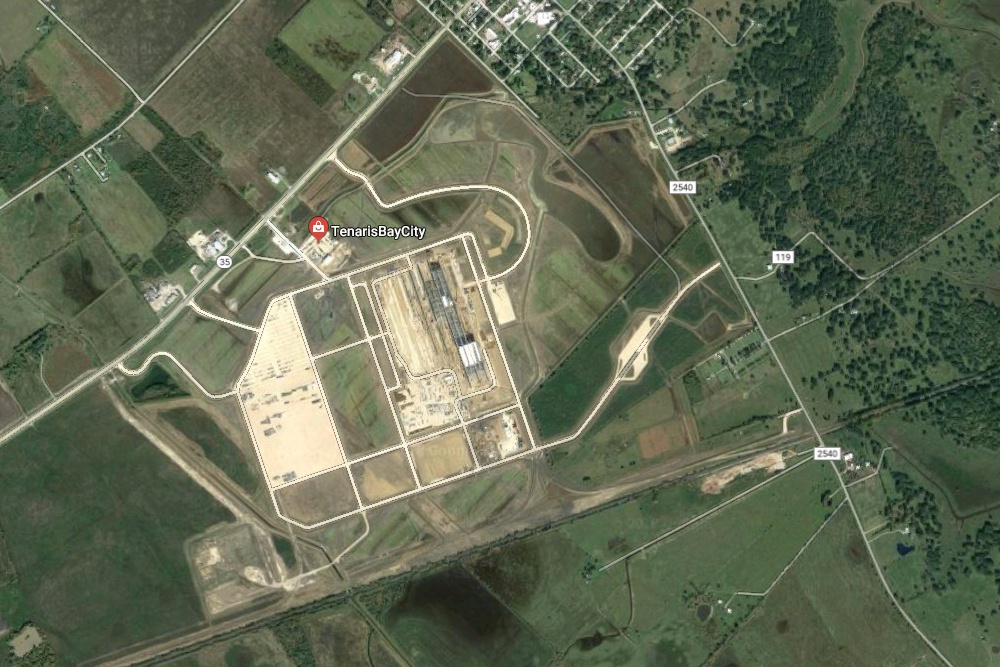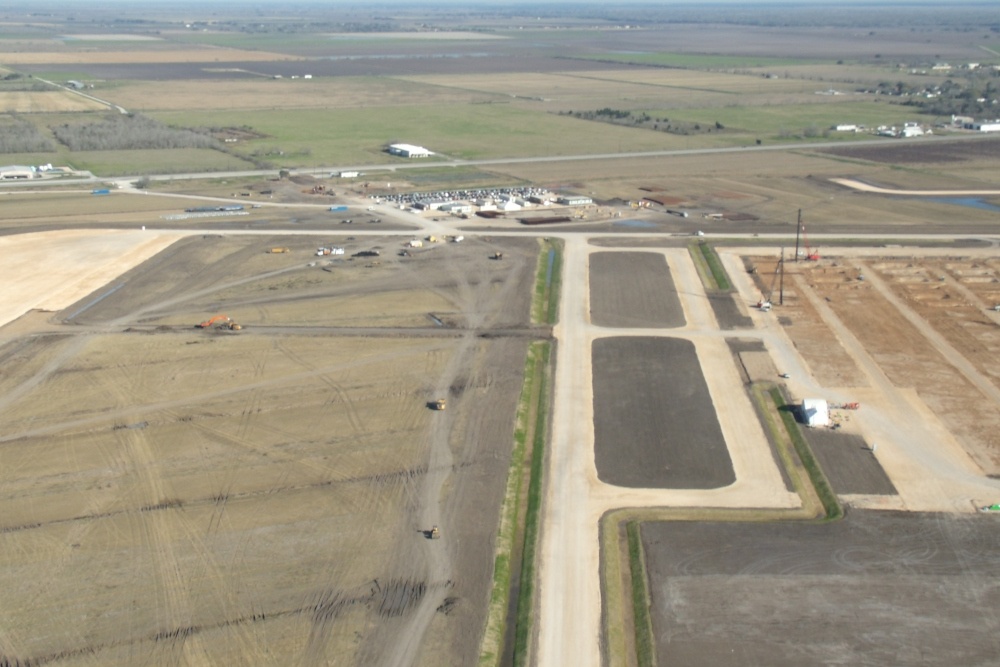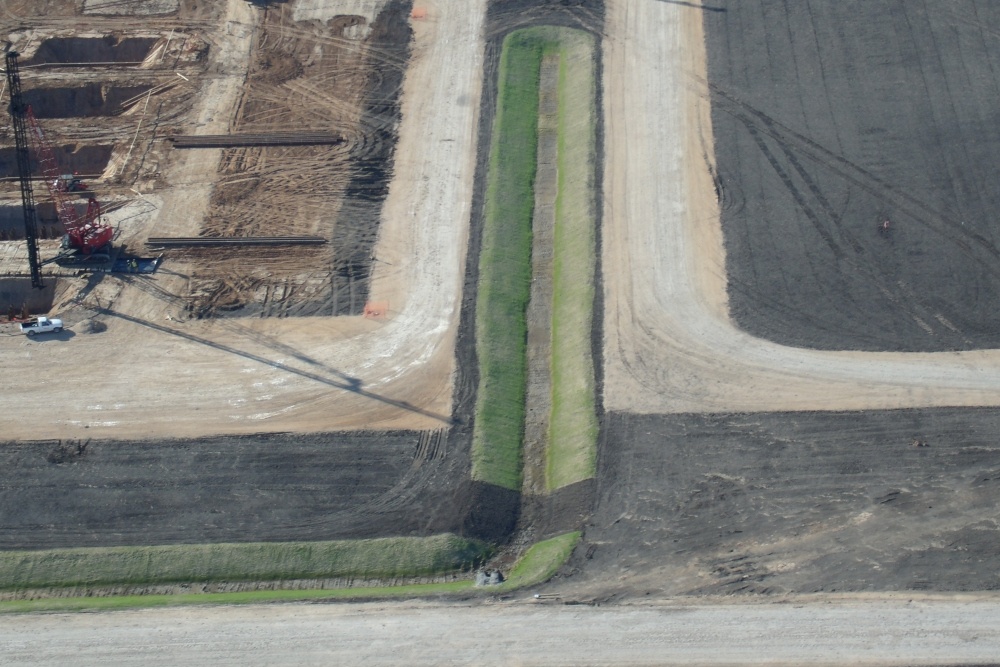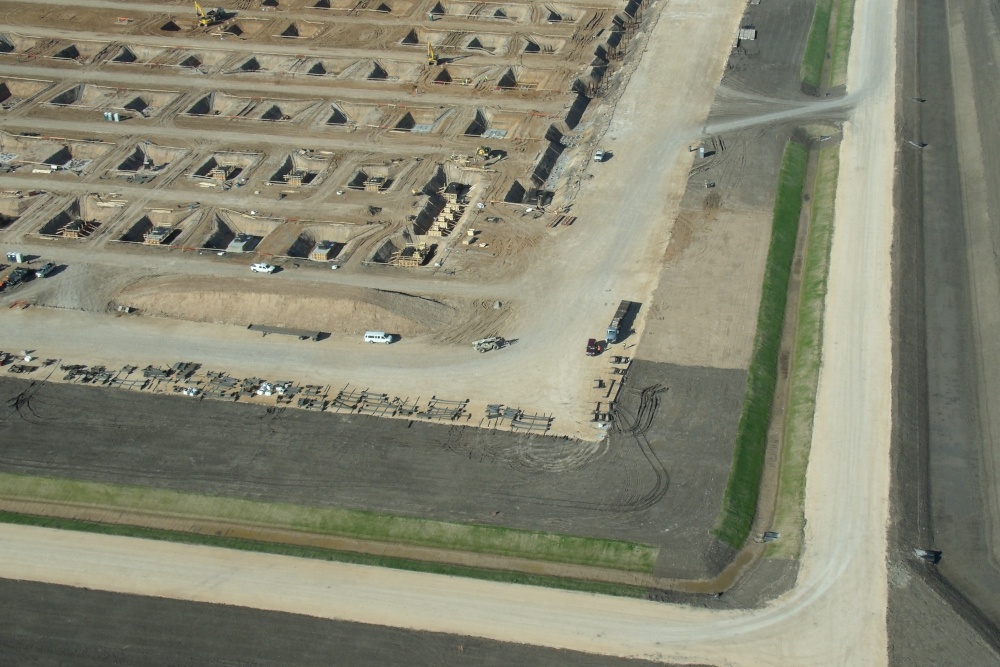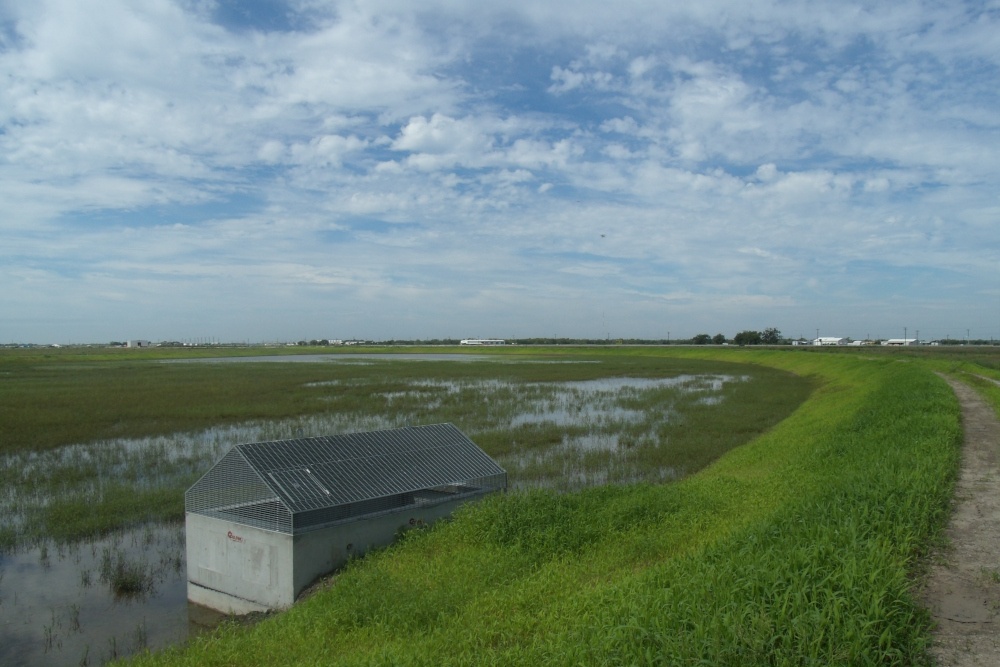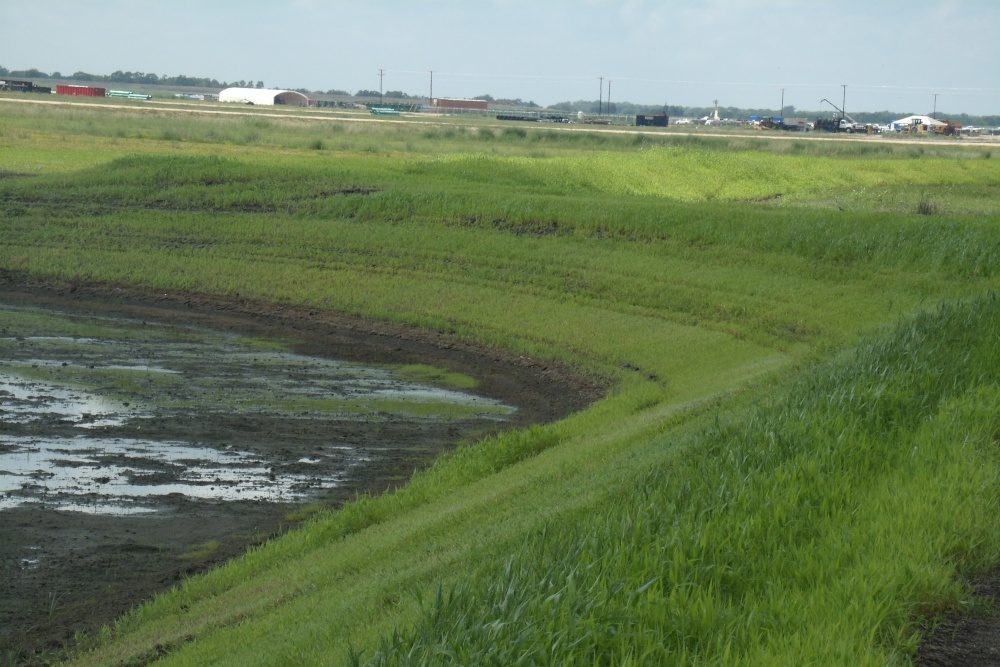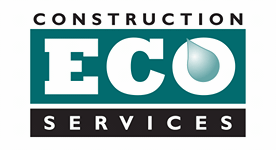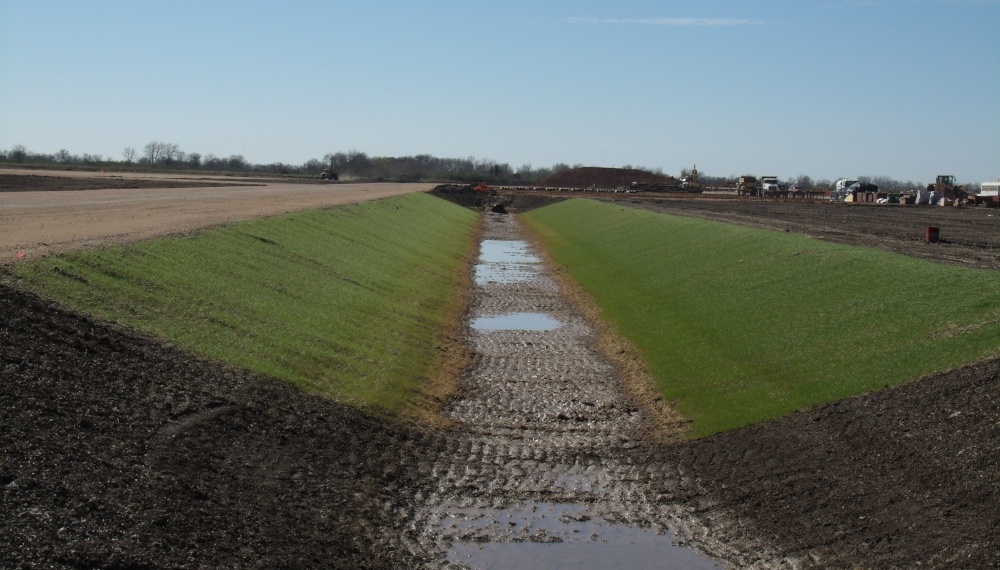
CASE STUDY: Tenaris Bay City
Slope Stabilization and Turf Establishment Success Using Profile Products
In February of 2013, Tenaris SA, a global manufacturer and supplier of steel pipes and related services, primarily for the energy industry, announced plans to construct a 1.2 million square foot seamless pipe manufacturing facility in Bay City, Texas. The $1.8 billion project would be built on an approximately 1200 acre “greenfield” on Texas State Highway 35 in Matagorda County, 80 miles south of Houston.
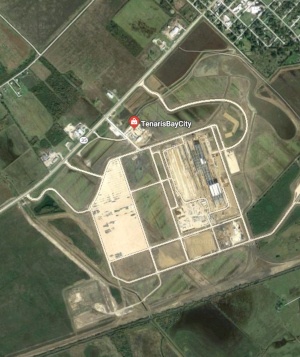 Construction EcoServices (CES) was contacted by WT Byler Company, a large earth-moving and heavy construction operation that has consistently been one of the top-ranked heavy and civil engineering construction firms in the U.S., to handle SWPPP Compliance and Channel and Slope Stabilization and Turf Establishment requirements for the Tenaris Bay City project. Having worked together on many high-profile projects, CES and WT Byler immediately put together the project team to evaluate the engineered plans for stormwater drainage and stabilization.
Construction EcoServices (CES) was contacted by WT Byler Company, a large earth-moving and heavy construction operation that has consistently been one of the top-ranked heavy and civil engineering construction firms in the U.S., to handle SWPPP Compliance and Channel and Slope Stabilization and Turf Establishment requirements for the Tenaris Bay City project. Having worked together on many high-profile projects, CES and WT Byler immediately put together the project team to evaluate the engineered plans for stormwater drainage and stabilization.
Having previously been a decades old turf farm, the property was very flat with virtually no topographic distinctions. Stormwater runoff was facilitated by two drainage channels, one onsite and another county ditch on the eastern boundary of the property.
Construction of the manufacturing plant, pipe storage yards, parking and area access roads would create approximately 350 acres of impervious surface area. To facilitate conveyance of stormwater from the property, over 60,000 linear feet of channels with varying depths and widths were to be constructed. More than 80 acres of surface detention was included in the design.
CHALLENGE
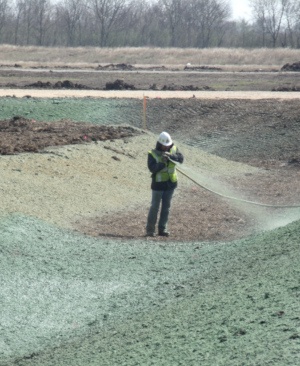 One of the challenges in constructing earthen drainage channels is establishing vegetation to resist erosion in the flow lines and stabilizing the slopes to prevent damage from channelized flow, as well as sheet flow from adjacent impervious areas. The original civil engineering design plan to address these issues was to install temporary erosion control blankets on the slopes and channel bottoms.
One of the challenges in constructing earthen drainage channels is establishing vegetation to resist erosion in the flow lines and stabilizing the slopes to prevent damage from channelized flow, as well as sheet flow from adjacent impervious areas. The original civil engineering design plan to address these issues was to install temporary erosion control blankets on the slopes and channel bottoms.
Temporary erosion control blankets (ECB) are not typically recommended for erosion control in the flow line of channels because they are usually comprised of straw backed with polypropylene netting and cannot withstand the velocity and sheer stress present in many channels. Additionally, the installation method for such blankets requires very smooth fine grading, which is time consuming and labor intensive.
SOLUTION
Construction EcoServices chose to pursue a quicker, and more cost-effective hydraulically applied stabilization solution to achieve channel stabilization and turf establishment.
Because, as noted earlier, the property was virtually flat, it was expected that water velocities in the channels would be relatively slow and sheer stress would be low (in non-technical terms, shear stress is the ability of flowing water to grab on and pull at the boundary of a channel). Even so, in order to “value-engineer” (VE) the ECB out of the project, the hydraulically applied solution had to be proven first. This was done via Profile’s modeling software, PS3.
Profile reviewed provided hydraulic information for a 2-year return frequency and found that a combination of Flexterra® HP and Terra-Shield™, when both applied at a rate of 3,500 lb/ac, would be a good fit for erosion protection on the Tenaris project site. Confidence was established that the Flexterra and Terra-Shield combination would withstand shear stresses less than 2 lb/ft. The addition of Terra-Shield to Flexterra HP would provide even greater erosion control effectiveness, as well as added wet bond strength, increased shear resistance, and higher moisture retention to the matrix.
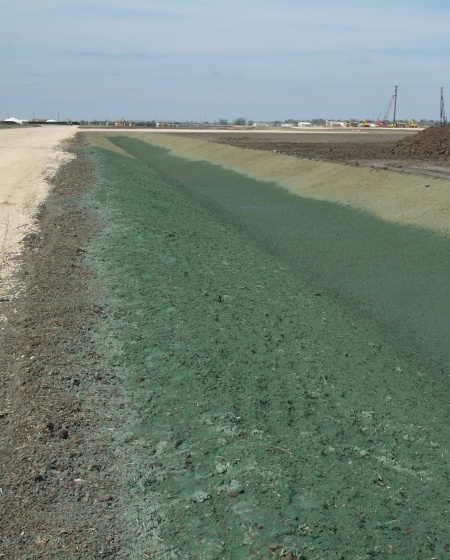 Using the project geometry, the provided flow data and Profile’s PS3 software, the Tenaris channels were analyzed using Manning’s equation to ensure compatibility with a less than 2 lb/ft shear stress threshold. A key aspect to the analysis was the understanding that when moving water interacts with the channel boundary, the velocity decreases due to the roughness of the channel boundary and shear stress is imparted onto the boundary as a result of this loss of velocity. The analysis showed that, though velocities increased up to over 3.5 ft/sec, shear stresses remained below 1 lb/ft2 allowing the analysis team to comfortably conclude that a Flexterra and Terra-Shield combination will be a good fit for erosion protection at the site.
Using the project geometry, the provided flow data and Profile’s PS3 software, the Tenaris channels were analyzed using Manning’s equation to ensure compatibility with a less than 2 lb/ft shear stress threshold. A key aspect to the analysis was the understanding that when moving water interacts with the channel boundary, the velocity decreases due to the roughness of the channel boundary and shear stress is imparted onto the boundary as a result of this loss of velocity. The analysis showed that, though velocities increased up to over 3.5 ft/sec, shear stresses remained below 1 lb/ft2 allowing the analysis team to comfortably conclude that a Flexterra and Terra-Shield combination will be a good fit for erosion protection at the site.
The decision was made to recommend the combination of Flexterra® HP and Terra-Shield™ be applied to the flow lines of the channels, and ProMatrix EFM be applied to the channel slopes. The Construction EcoServices / Profile recommendation was approved by the Civil Engineer of record, and the temporary Erosion Control Blanket was eliminated from the project in favor of the hydraulically applied solution.
RESULTS
Application of the recommended “recipe” was completed over a 5-month period with the following results:
- Project cost savings exceeded $250,000 compared to the original design.
- Construction EcoServices “value engineered” hydraulically applied ECB solution utilizing an innovative combination of stabilization products.
- 115 acres of drainage channels and slopes were successfully stabilized over a 5-month period.
